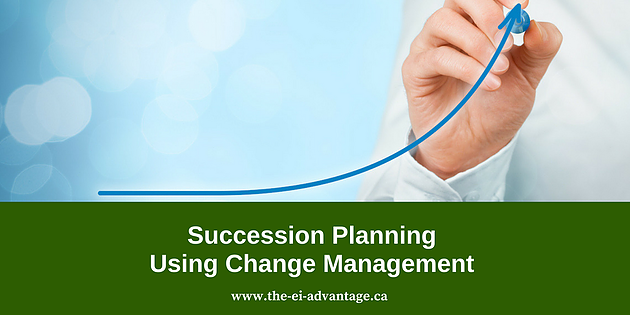Blog
Succession Planning Using Change Management
July 31, 2018

One of the pieces of feedback that we hear most often from our coaching clients is: “how can I get motivated to invest in my organization’s succession planning process?”
As the demographics of our workplaces continue to change, succession planning has become increasingly more important to the long-term success of any business.
Many of the leaders we coach and train express concern than there aren’t enough “ready now” candidates who can easily step into the role of an outgoing CEO or C-Suite leader within an organization.
With this in mind, today we’re sharing four ways to use change management techniques to begin the process of succession planning in a way that focuses on the employee experience while ensuring that they are properly trained to step into their new role when the time comes:
Make Communication a Priority
Talent management professionals know that it’s our responsibility to guide the organizations we work for and the experts who lead them in the right direction. When it comes to succession planning, it’s our job to demonstrate that succession planning and talent development coincides with business goals and outcomes.
One way we can work with leaders to implement succession planning processes is to communicate regularly about specific projects and new responsibilities that can be assigned to a team member in order to develop or enhance specific skills.
By assigning a large project or asking staff to take on extra responsibilities not only develops their professional capabilities, but offers new opportunities for performance management and feedback which are critical to effective succession planning.
Ask the leaders in your organization to watch how their team members manage these new tasks, and ask them to report on the following:
- Were they forward-thinking and strategic?
- How well did they know the project requirements and indicators of success?
- How connected are they to their team?
Identify and Develop Key Metrics
Succession planning requires that we review several key metrics, including:
- How many successors are available for critical positions?
- How many “ready now” successors are there?
- How many “high potential” successors are there?
- Which employees have “high potential” for movement?
- How many promotions are necessary within the succession plan?
These questions aren’t one-time queries; in fact, the need to be re-addressed and re-assessed on an ongoing basis – at least every other Quarter – in order to avoid potential succession issues such as large layoffs which may diminish the number of available candidates.
Be Patient With Change
Succession planning can be a slow process, especially at the outset when knowledge and skill deficits are often at a high.
Be patient, and make a point to meet with senior leadership, HR leaders, and any additional consultants or key decision makers every three to six months in order to review the talent pool and assess succession readiness.
By being patient and making succession planning part of your company’s regular discussions, senior leadership will begin to own the process of succession planning.
Actionable Steps for Succession Planning Using Change Management
Follow these steps to increase organizational buy-in for succession planning within your organization, and consider investing in leadership development to prepare your leadership to actively participate in this process:
- Communicate: Create an internal document that outlines the steps and expectations involved with the process.
- Educate: Create job aids to assist with transitions, and work with leadership to define examples of definitions of “readiness” within your organization.
- Demystify: Ensure that talent support and development tools are readily available to anyone interested in enhancing their professional learning.
- Illustrate: Showcase how succession planning and organizational change align with specific business goals. Focus on both long and short term outcomes.
- Demonstrate: Find examples of successful succession planning within your industry and come prepared to show how you can apply a similar model.
Consistently reiterate the value of succession planning and lean on change management techniques to convey value and reduce resistance. By recognizing that people learn and react to change differently, we can create an environment that is organized, cohesive, and prepared for any business outcome.
At EI Advantage, we help leaders and team members develop their Emotional Intelligence (EQ) to better understand how others approach change, how they deal with change on a personal level, and how your team can navigate challenges together.
Want to learn more about how our services can help you improve your team’s overall performance? Contact us today or reach out on Facebook, LinkedIn, or Twitter.
